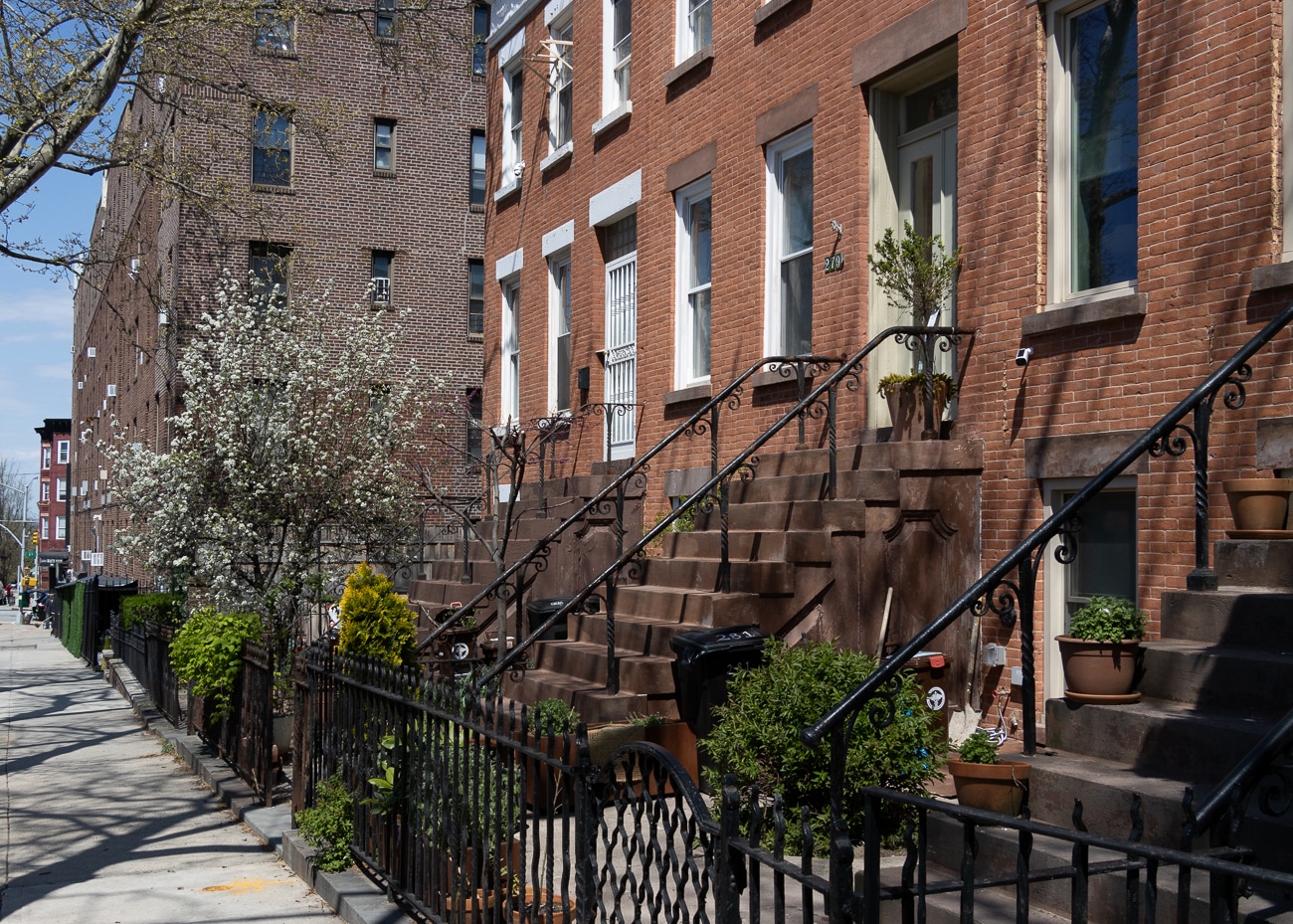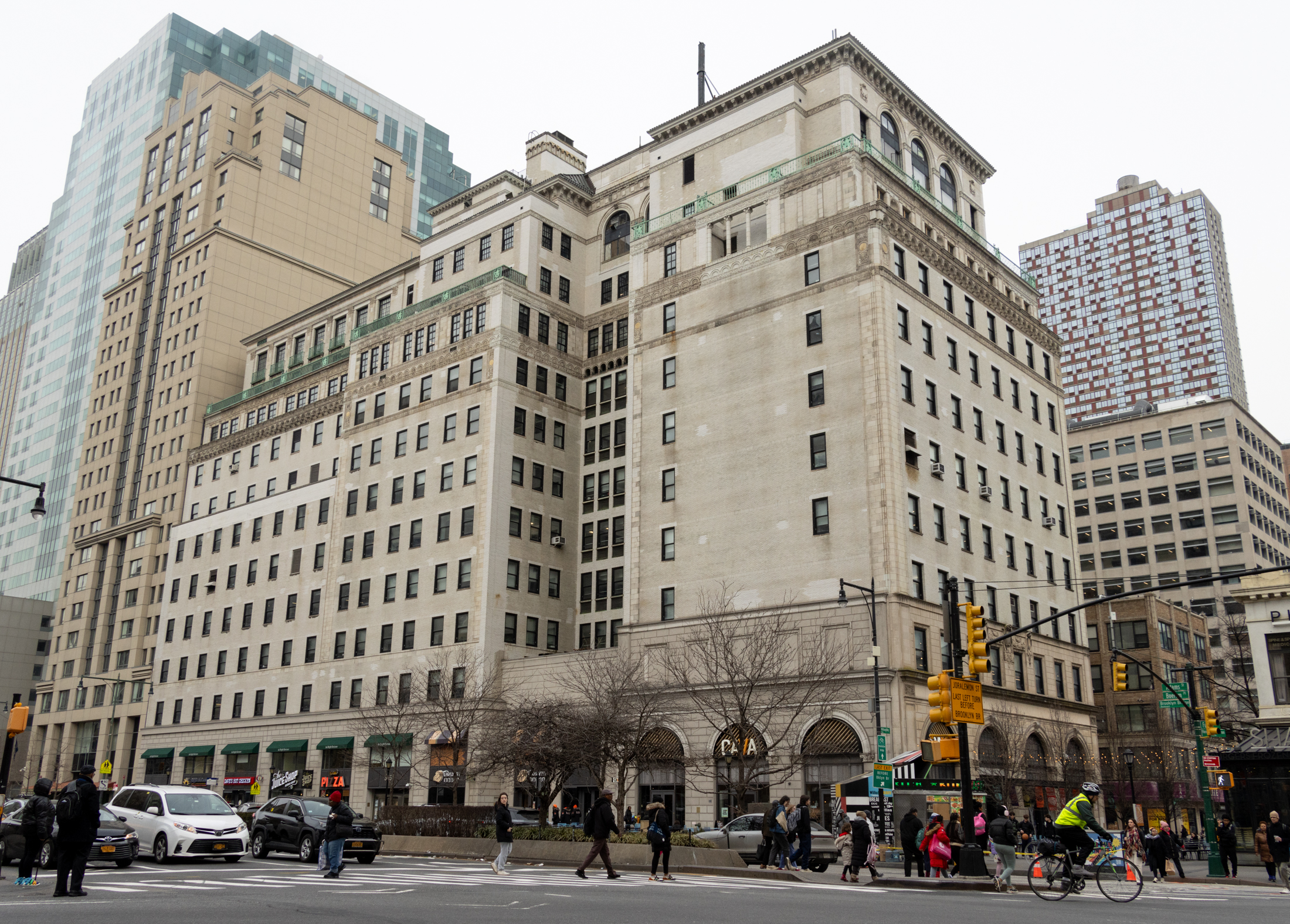Queenswalk: Thrifty Doings in Ridgewood
In 1921, fourteen Ridgewood businessmen decided it was time to have their own bank. Ridgewood had originally been part of Bushwick, and the border between the two neighborhoods was fluid, with settlement of the entire area being mostly German in the latter part of the 19th century. The many jobs in the breweries and other…

In 1921, fourteen Ridgewood businessmen decided it was time to have their own bank. Ridgewood had originally been part of Bushwick, and the border between the two neighborhoods was fluid, with settlement of the entire area being mostly German in the latter part of the 19th century. The many jobs in the breweries and other German-American businesses in Bushwick and Williamsburg meant that the large German community had the opportunity to grow well past the borders of what would become boroughs. By 1921, the area was still predominantly of German origin, and it was these German-American businessmen who founded the bank for the use of the community.
The Savings Bank of Ridgewood was a mutual savings bank, and had no stockholders. All of the bank’s profits were shared by the depositors. Richard Stutzmann, a longtime Ridgewood resident, and the first president of the bank, boasted, “Germans are notoriously thrifty and conservative people in whose nature there is always the desire to save in a most conservative fashion.” The officers of the new bank went door to door in the community, handing out flyers and inviting people to come to the bank and open an account. Within two years, they had almost three million dollars in deposits.
The first branch of the bank was fittingly, in a remodeled tap room on the corner of Myrtle and Forest Avenues, in Ridgewood. This space was too small in a matter of years, and in 1929, the bank hired the firm of Halsey, McCormick & Helmer to design a new and modern bank building. The firm delivered a limestone clad two story Art Deco building with a granite base. The interior of the bank featured travertine walls and marble floors.
The bank was beautiful, one of the firm’s small, but exquisite banks. Halsey, McCormick & Helmer (HM&H) were one of the best architectural firms designing banks in the early decades of the 20th century. They were responsible for the reworking of the Dime Savings Bank in Downtown Brooklyn, and their most magnificent Art Deco design, the Williamsburgh Savings Bank Building on Hanson Place, Brooklyn, now across the street from the LIRR station and the Barclay Center. In addition to those buildings, they also designed the Kings County Savings Bank, now Banco Popular, on Eastern Parkway and Nostrand Avenue in Crown Heights, the former Brevoort Savings Bank on Fulton Street near Nostrand Avenue in Bedford Stuyvesant, and the Emigrant Savings Bank on the Grand Concourse, in the Bronx. With the exception of the Brevoort Bank, all the rest of the banks on that list are now landmarked.
HM&H were masters of a subset of Art Deco architecture called the Modern Classical Style, in which familiar elements of classical architecture were stripped down to their basics, and the idioms and patterns of the Art Deco style were incorporated. Their banks are not flowery and ornate, like the Beaux-Arts banks of York and Sawyer, who also designed banks. They are often square and boxy, with classical elements such as a pedimented entryway and upper balusters, but with that Art Deco flat, incised and stylized, almost pre-Colombian design. They firm used that here on the first Ridgewood Savings Bank building, with great skill and beauty. This branch is still the bank’s headquarters, even though Ridgewood is now the largest mutual savings bank in New York State. It’s been enlarged several times over the years, as well.
As Queens grew as a borough, the Ridgewood Savings Bank grew too. The Forest Hills neighborhood had begun as the creation of developer Cord Meyer, who bought 600 acres of farmland and called it Forest Hills, because it was high ground, near Forest Park. He began laying out streets, utilities and the first houses. There will be more on the development of Forest Hills later. By 1917, he was building apartment buildings in Forest Hills, and by 1923, the U.S. Open Tennis Championship was being played at the West Side Tennis Club. By 1936, the subway had finally made its way out to Queens, with the IND line at Queens Boulevard and Continental Avenue, which today has the E, F, M and R lines. Forest Hills was now a wealthy neighborhood, and long overdue for a bank branch.
In 1940, Halsey, McCormick and Helmer were once again tapped to design the bank building. Robert Helmer was the only registered architect in the firm, and probably designed most of their buildings, up until 1935, when he left the firm. George McCormick was the business liaison, and was especially experienced in bank practices and practical design. It was he who worked with each bank client, making sure their practical as well as architectural and outward needs were met. Howard S. Halsey had been the co-founder of the original firm from which HM&H evolved, a firm called Thomas Bruce Boyd, which also specialized in banks. He was the president of HM& H, until he retired in 1932. When Helmer left, an associate of the firm, Adolf Lancken Muller, became the chief designer. He would have been the designer of the Forest Hills branch of the bank. And he had some new ideas.
This bank was to be Ridgewood Savings Bank’s first branch. They had considered themselves the perfect community bank, and it was important that the branch continue that tradition. They chose Forest Hills because of the wealth and prestige of the neighborhood itself, and because the subway station would be right next door. One couldn’t ask for a better delivery system of customers. Besides which, Queens Boulevard had just been widened, making this intersection a destination for automobiles and buses, as well. The bank was to be placed in a prominent triangular lot, with the façade highly visible on three of the four sides. The design needed to have the gravitas necessary for a bank, but modern and well…cool.
Mr. Muller delivered. The now landmarked design was in the Modern Classical Style, with a rhythmic combination of shapes and surfaces: flat, concave, convex, rectangular, triangular and round. The solid limestone building is not encumbered by excess, but the use of glass, limestone and bronze is modern, but still classic in style. The façade is also subtly ornamented with etched designs, including stylized Deco eagles on the rounded corners of the building, several clock faces, and the name spelled out in bold etched lettering. They are not as ornate as Helmer’s more pure Deco fancies, but still, the Halsey, McCormick and Helmer touch is still there. This really is a great building.
The Ridgewood Savings Bank was highly successful in its opening of the Forest Hills Branch. The critical acclaim of the design of the building didn’t hurt either. It won the annual building award for excellent design by the Queens Chamber of Commerce, in 1940. Ridgewood Savings Bank opened another branch in Laurelton in 1948, followed by a branch in Hollis, in 1961. Today, they have 35 branches across all five boroughs, Long Island and Westchester. Not bad for a neighborhood bank from a working class neighborhood in Ridgewood, Queens. GMAP (Ridgewood), GMAP (Forest Hills)
(Photo: Ridgewood Savings Bank, Ridgewood Branch. Jim Henderson for Wikimedia)












My parents had an account at the Forest Hills branch when I was a small child in the late ’40s. I remember the sense of awe I felt when my mother took me there.